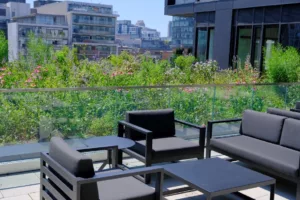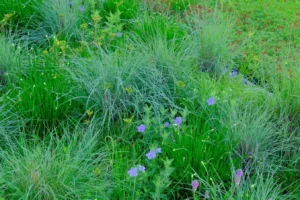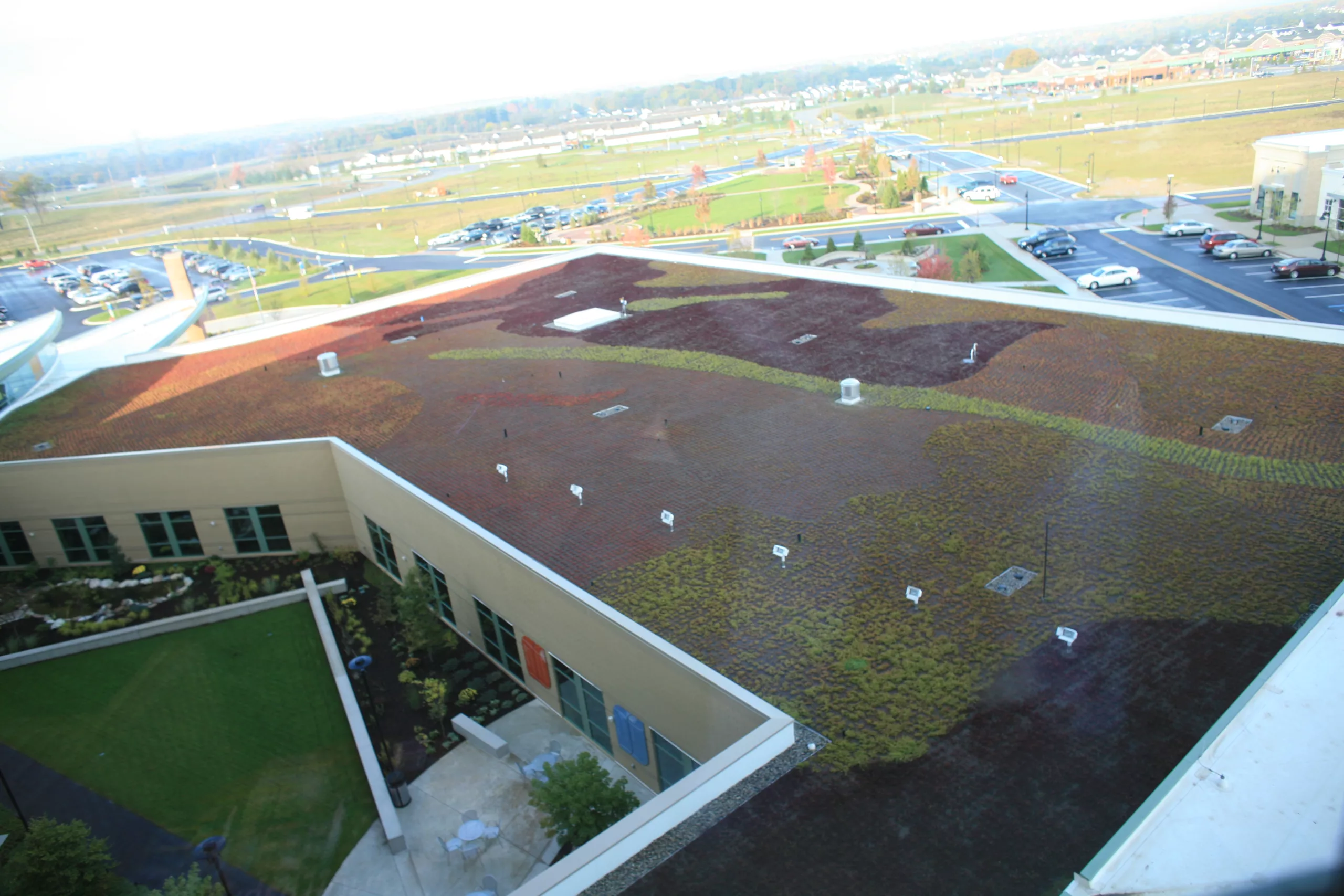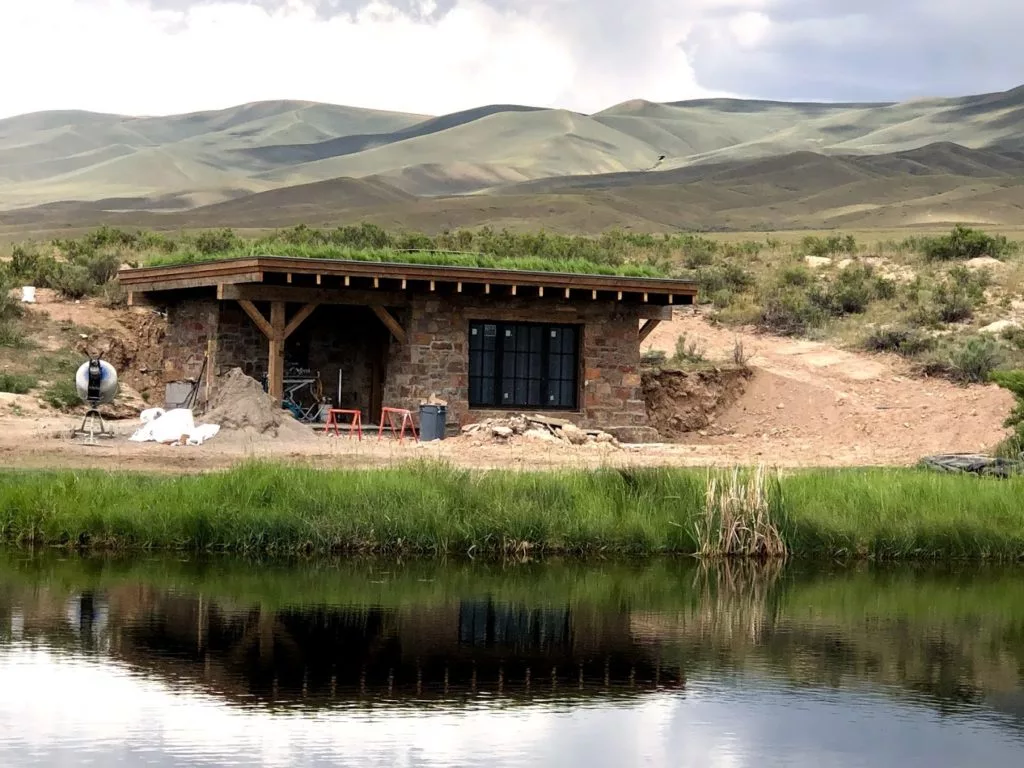On a green roof we look at the plant mixes that enhance the opportunities for ecosystems, species and genetic diversity to thrive so that we are considering the diversity of species living in the area and the relationships the species have with each other. By doing so, we engage in creating the potential for biodiverse environments on each green roof.
Defining Intensive Green Roofs/Biodiverse Green Roofs?
LiveRoof Ontario defines a biodiverse green roof as either intensive or semi-intensive (per GRHC definitions), with a minimum growing medium depth of 150mm/6 inches. It is feasible to create a biodiverse green roof with only 108mm/4.24 inches of growing medium but it is highly dependent on-site conditions and supplemental watering on a regular basis. Plantings can be designed site specific for full sun, semi shade and full shade applications.
Let’s Look at LiveRoof Ontario’s Projects
Kees Govers is the LiveRoof sales representative for Ontario, and he is highly knowledgeable with what it takes to create a biodiverse green roof. “A biodiverse vegetated roof consists of a vegetated roof system with growing media depth of 150mm/6inches and deeper (100mm/4.25 inches if site conditions are favorable), planted with a mixture of native and adaptive species of plants, consisting of at least 4 families, 5 genera and 10 species (4-5-10). At least half of the genera and species to be native to the Great Lakes basin. The minimum density of the native species in the plant mix shall average at least 2 plants total per square meter throughout the vegetated roof area, and total plant density shall be at least 11 plants/m2. All plant mixes to incorporate at least 2 each of spring, summer and fall flowering species. Graminoid species to be incorporated at no more than 15% of the accent plants, to ensure long term retention of the biodiversity.” The project 3300 Waterworks, pictured here is an example.
The plants used on the Waterworks roof encourage many species to visit the roof, and it is an amenity deck; therefore, used by the building residents. Lastly, the plants used in this example meet the expectations of the city of Toronto for conformance related to coverage and plant density according to By-law NO 583-200 492-9L.

Waterworks 505 Richmond West
Another LiveRoof Ontario Project
Another example is 3300 Bloor West pictured to the right. Which illustrates the additional expectations necessary for green roofs to quality as biodiverse. As Kees explains, “There are practical implications such as
- Groundcover Sedums. Represents one family (Crassulaceae) and 1 genus (Sedum) with however many species
- Genera in the same family are Phedimus, Sempervivum, Jovibarba, Hylotelephium (the big upright Sedums), Orostachys, Rhodiola with species hardy in Ontario, but not
- Several Genera possible, but only 1 family
- Allium is another logical inclusion.
- Family: Amaryllidaceae
- Genus (Allium) and one or more species. May or may not be native to the Great Lakes Basin, depending on the Many ‘Nativars’ that don’t spread by seed. These are preferred over non-native chives.
- One Family, one Genus in our climate, a number of possible species native, non- native and hybrid. Native and hybrid are most
There are a few more succulent plants such as Euphorbia (limited species), Opuntia (prickly pear cactus), and Talinum, however none of the above with the exception of the Opuntia, Talinum and a couple of obscure species of Sedum are native to the Great Lake Basin. None of them are prevalent in the trade.
- At least 2 more families and a minimum of 3 genera will need to be from plants native to the Great Lakes Basin (forbs or graminoids) in a biodiverse/intensive green
- Plenty of families and genera available to choose from depending on growing medium depth and sun
- Requiring minimum 2 species each that flower in spring, summer and fall ensures that this is pollinator friendly during all three seasons that pollinators are
- Keeping graminoid species (grasses, sedges and rushes) to 15% of accent species allows the other plants space to develop and compete with these species.”

The plant in the blue flower is Ruellia humilis (wild petunia)
Pollinators and Others
A biodiverse green roof should provide food for more than just pollinator species. Aside from the attributes of the plant community, any naturally occurring species that are food for species such as song birds should also be encouraged by a biodiverse green roof. That means beetles, bugs, plant eating larvae of all sorts, as those are high protein and high fat foods for birds. Hives of honeybees (non-native) are thought detrimental to encouraging populations of native ground dwelling bees from establishing on lower-level vegetated roofs.
Why It Matters
The green roof plants and their genetic differences will support the ecosystem that will encourage various species of pollinators, birds and insects to thrive. We can do biodiversity on a roof if we pay attention to the plants we select.
This article is part of LiveRoof Global’s series The Evolution of Green Roof Plants 2023. This edition is thanks to Kees Govers of LiveRoof Ontario one of 14 Network Growers. To learn more about LiveRoof Ontario click here. Doni Burton, Business Development Manager compiled this piece. Reach her at Doni@liveroof.com with questions or comments.

Kees Govers





